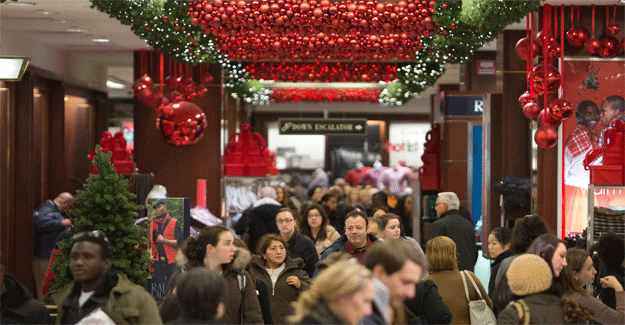
Consumers Are ‘Spending Because They Can’ Headed Into Holiday Season
The impact of the pandemic on US economy will be a key factor in retail sales during the 2021 holiday season, but the National Retail Federation is nonetheless confident in its forecast for record growth, NRF Chief Economist Jack Kleinhenz said. “There are several factors coming together to have a major impact on the holiday outlook, but household fundamentals are a bright spot in the uncertain present,” Kleinhenz said. “Consumers are in a very favourable position going into the last months of the year and are spending because they can.” NRF expects 2021 holiday retail sales during November and December to grow between 8.5-10.5% over 2020 to a total between US$ 843.4 billion and US$ 859 billion. Even at the low end of the forecast, that would be both the largest growth rate – topping last year’s 8.2% – and the largest total amount – beating last year’s US$ 777.3 billion – on record. The forecast excludes automobile dealers, gasoline stations and restaurants to focus on core retail, but includes online sales, which are expected to be up between 11% and 15% to between US$ 218.3 billion and US$ 226.2 billion. Kleinhenz said the pandemic raises the questions of whether Covid-19 cases will continue their downward trend and whether that will increase consumer confidence and lead to increased spending. And if consumers spend more, will it continue to be on retail goods or will spending start to shift to services if they become more comfortable traveling, going out to restaurants or attending sports and entertainment events? NRF’s forecast model looks at those factors along with disposable income, past retail sales, employment, wages, weather, energy prices and other variables. Despite “complex mechanics and forces at work,” the outlook is favourable for strong retail sales growth this holiday season. A “savings buffer” of about US$ 2.5 trillion accumulated by consumers who have largely stayed home rather than dining out or traveling during the pandemic has “supercharged” spending. In the meantime, income is growing in the form of more jobs, more hours and higher wages reflecting businesses’ competition for workers during the current labour shortage. Household wealth hit another record high during the second quarter (the latest data available) and has boosted consumer confidence. Spending has continued at a brisk pace throughout 2021 – up 14.5% year-over-year for the first nine months – and has returned to pre-pandemic levels for many retail categories. While some individuals who lost jobs last year still face financial difficulty, data tracked by Harvard University shows spending by low-income consumers was up 22.3% at the end of September compared with pre-pandemic January 2020. The number appears to reflect enhanced unemployment benefits and other stimulus money such as the new child tax credit. Kleinhenz said the strong growth in income and “stockpiled savings” should help spending overcome inflation that has been driven both by consumer demand and supply chain disruptions. The challenge when – and if – sales begin to fall will be whether the drop is caused by weaker demand or reduced product availability. Kleinhenz said higher gasoline prices and higher energy costs for home heating will divert some money that could otherwise go to retail sales, especially with weather forecasters saying a La Niña pattern will likely bring cold weather this winter. Nonetheless, a La Niña has coincided with stronger retail sales in the past.
Textile Excellence
If you wish to Subscribe to Textile Excellence Print Edition, kindly fill in the below form and we shall get back to you with details.








